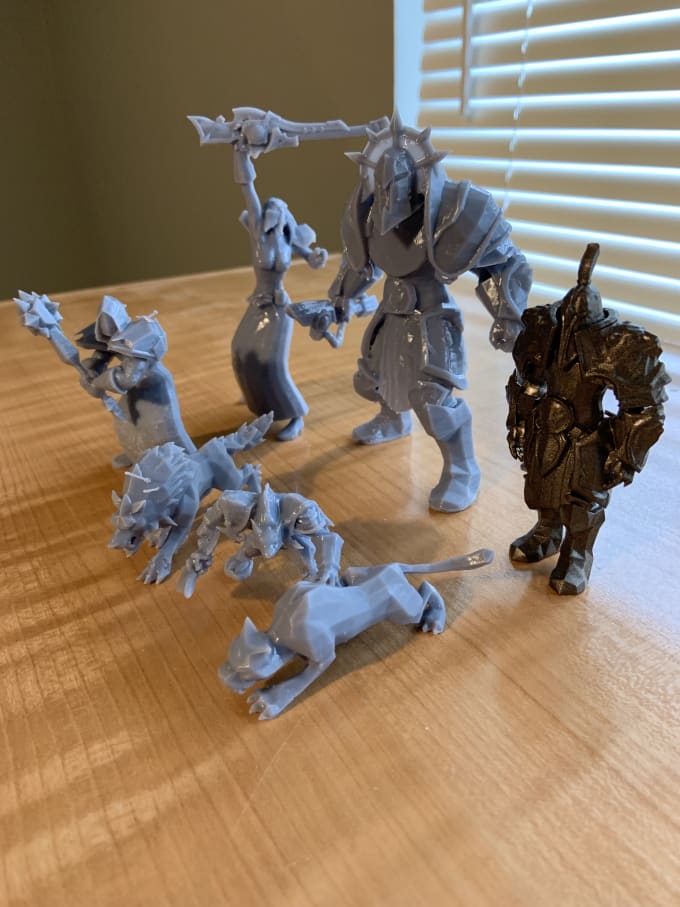3D printer sand beast
How to build a Strandbeest thanks to 3D printing
Posted By Amandine Richardot on Aug 9, 2017 |
Last week, one of our customers, Nicolas Raynaud, went viral on Reddit, posting a gif of the 3D printed robot he made thanks to Sculpteo. He designed a robot, after Theo Jansen’s Strandbeest mechanism. What is it? How to build a Strandbeest thanks to 3D printing? What are our best tips to succeed in creating your own walking device? Discover it right now!
A great 3D printed Strandbeest
Nicolas Raynaud, one of Sculpteo’s customers, posted this gif on Twitter last week, which went viral.
Why has it been such a success? The way this 3D printed robot walks is hypnotic due to its amazing smoothness. Nicolas Raynaud based himself on Theo Jansen’s Strandbeest mechanism. He designed the CAD models of this walking device on his own, using Fusion 360. Discover our tutorial to learn more about how to design with Fusion 360. He also uploaded its Strandbeest models on Thingiverse.
Black parts were made on Nicolas Raynaud’s own printer, and white parts were printed thanks to our 3D printing service, using white plastic and SLS technology. Why using a 3D printing service when you already own a printer? Well, it’s a great way to save you some time.
But now, discover how he succeeded in creating this smooth walking movement thanks to Theo Jansen’s Strandbeest, which helped him build this amazing 3D printed robot.
A quick introduction to Theo Jansen’s Strandbeest
Theo Jansen is a Dutch artist and kinetic sculptor. In the early 1990’s, he started creating large mechanisms in PVC which can move on their own due to the wind only, and which seem to walk. These structures are called Strandbeest, which comes from ‘Strand’ meaning ‘beach’ and ‘beest’ meaning ‘beast’. So a Strandbeest could be called a beach animal.
The work of Theo Jansen is a real fusion between art and engineering. Here’s what the Dutch artist says about this:
“The walls between art and engineering exist only in our minds.
”
He now even tries to equip his structures with Artificial Intelligence so that they can be fully autonomous and avoid obstacles on their own. For instance, if a Strandbeest enters the water, it can detect it and it moves away from it right away.
This work has been exhibited for instance at the Peabody Essex Museum.
Theo Jansen’s linkage: How does the Strandbeest mechanism work?
To create its Strandbeest, Theo Jansen designed a whole mechanism, known as Jansen’s linkage. It’s made in order to create a smooth walking motion, without the classic sharp movements of usual robots.
By MichaelFrey – Own work, CC BY-SA 4.0, Link
By MichaelFrey – Own work, CC BY-SA 3.0, Link
To make one of these walking devices, you need to design tubes – the Dutch artist used PVC pipes – which respect the following proportions and to insert a rotation mechanism in the blue part. It took many months of research for the Dutch artist to find these precise ratios, but finally, he succeeded using an algorithm which came out with these numbers.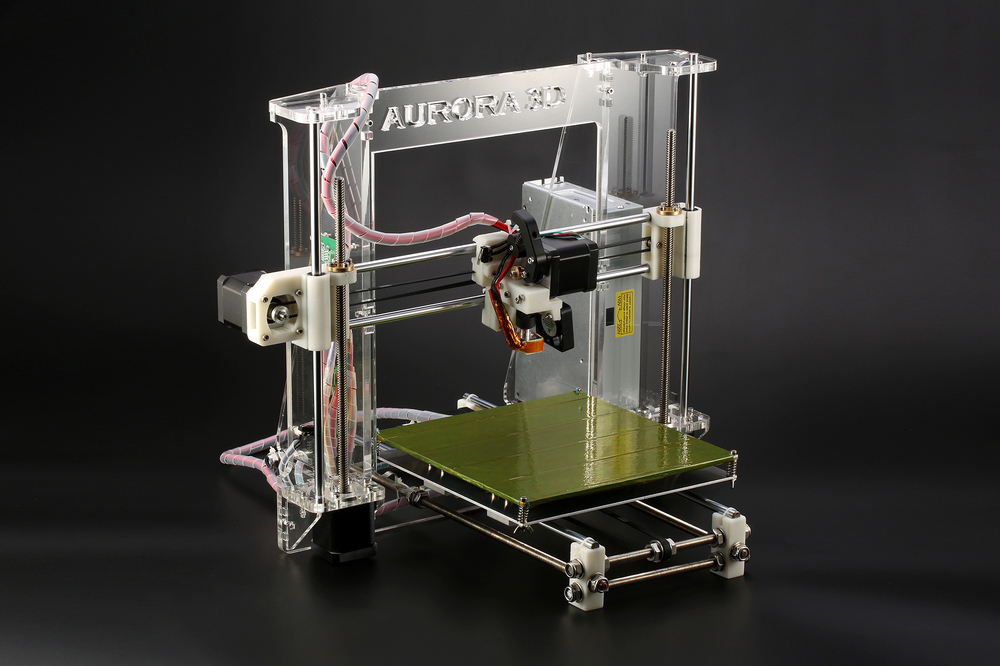
By Mliu92 – Own work, from Jansen, Theo (2016). Theo Jansen’s Strandbeest: leg system. Strandbeest. Retrieved on 27 July 2016., CC BY-SA 4.0, Link
To ensure stability, Theo Jansen started designing wider structures, with a larger number of legs. Moreover, he started inserting tubes parallel to the ground, which are like the spinal cord of the Strandbeest. Thus, you should think of these rules if you want to build your own Strandbeest.
Theo Jansen’s linkage can be used on its own to create structures that will move with the wind, but you can use it for other kinds of uses. Indeed, it’s used a lot in the making of 3D printed robots to create a smooth walking movement instead of the classic robotic movement.
Our best tips on how to build a Strandbeest using 3D printing
As you already foresaw, it’s totally possible to build a 3D printed robot thanks to this Strandbeest walking mechanism. We already told you where you could find Nicolas Raynaud’s Strandbeest model, but you might want to try to build this 3D printed robot on your own. It can be quite difficult due to the many technical constraints, but here are our best tips on how to build a Strandbeest!
It can be quite difficult due to the many technical constraints, but here are our best tips on how to build a Strandbeest!
Find the right motor for your Strandbeest
Since there won’t necessarily be wind around you all the time to make your Strandbeest move, we advise you to make it a 3D printing robot. Indeed, Theo Jansen’s linkage can be used to create robots with a smooth walk, as Nicolas Raynaud did. But finding the right motor is not an easy task, due to the fragility of a Strandbeest structure. If it’s not powerful enough, your structure will not move. If it’s too powerful, it will break your creation.
Also, to make sure that your Strandbeest walks, you need to find a way to transmit the movement coming from the motor. We recommend you to use a gear mechanism. You can even design your gears using laser cutting, discover our tutorial now!
Choose the right material
The weight of each part of this 3D printed robot is essential.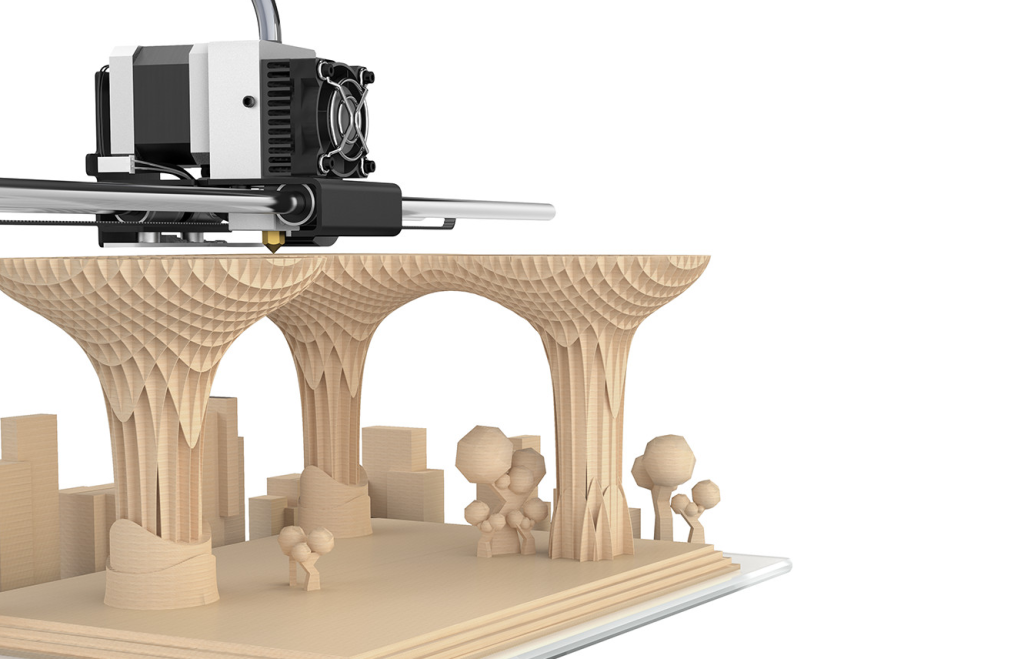 As a result, you need to find the right material for your need. We strongly recommend choosing a light material that will respect these constraints. Indeed, if it’s too heavy, the movement of your 3D printed robot will not be as smooth as expected.
As a result, you need to find the right material for your need. We strongly recommend choosing a light material that will respect these constraints. Indeed, if it’s too heavy, the movement of your 3D printed robot will not be as smooth as expected.
At Sculpteo, we offer a wide range of materials, from plastics to metal. Looking for lightweight options? No problem, discover our PA12 plastic! That’s the material that has been used by Nicolas Raynaud in order to build his Strandbeest 3D printed robot.
Focus on stability
It can take many many iterations before getting the right Strandbeest. One of the main challenges you face is finding stability. How many legs should you make? It’s hard to know before trying to assemble your final structure.
Leg linkage is key. The assemblies of each tube should be robust but flexible at the same time to ensure a smooth movement. Also, the camshaft assemblies parts are key. They shall really be well proportioned and properly aligned to equilibrate the whole structure.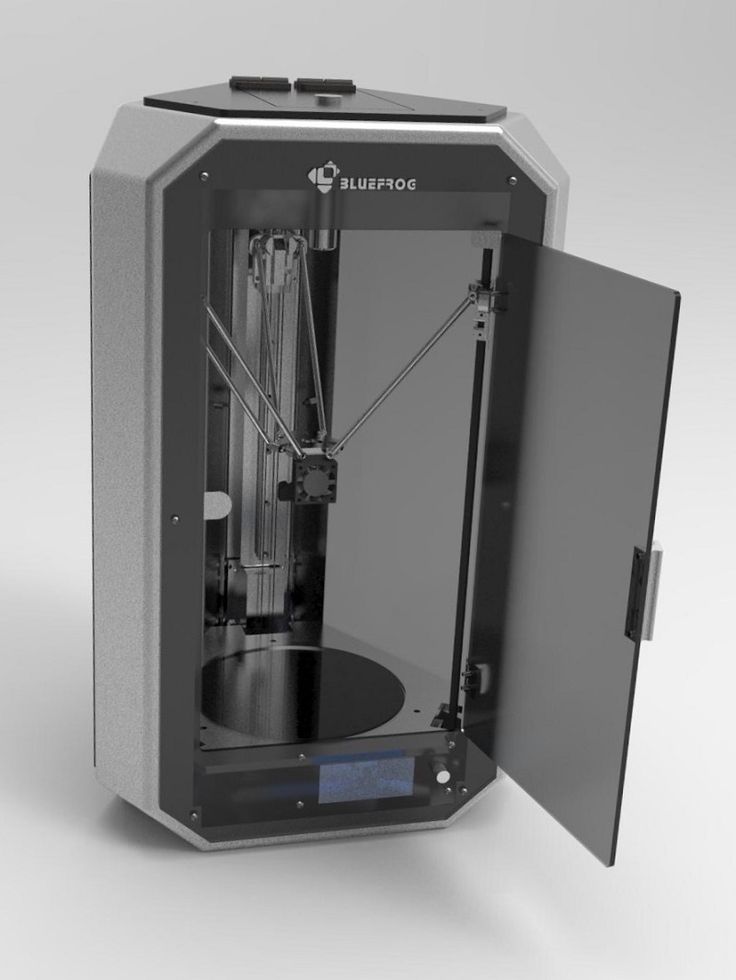 A good solution to these issues can be to use spacers inside of the leg joints to widen them without adding a lot of weight.
A good solution to these issues can be to use spacers inside of the leg joints to widen them without adding a lot of weight.
Beware with friction
Using Jansen’s mechanism, there are many potential friction areas due to the fragility of the structure and of its ongoing movement. Indeed, each leg has 7 individual joints that are both applying force against each other. If friction is too important, your 3D printed robot could break.
To deal with this issue, you can use ball bearing inside your joints, or substitute them with Teflon washers.
You’re now ready to try to create your 3D printed robot using Theo Jansen’s Strandbeest structures. Feel free to share your projects with us!
Looking for some CAD design tutorials? Discover our now, either on Fusion 360, or on Inspire, and FreeCAD.
Photocredit: Plaudens Vela MarcoZwinkels
▷ sand beast 3d printer 【 STLFinder 】
Beast 3D printer
thingiverse
Back panel for normal 4 extruder set up and 5 extruder diamond full colour arrangement' The laser mount and the Diamond full colour https://www. thingiverse.com/thing:2511480 attache to diamond_5head_holder.stl which fits up to Beast tool lifter . ...
...
thingiverse.com/thing:2511480 attache to diamond_5head_holder.stl which fits up to Beast tool lifter . ...
...
THE BEAST - FULLY 3D PRINTED FRAME AND RAILS 3D PRINTER
thingiverse
- Cyclops Mount with 3 holes - Cyclops mount with 4 holes (This is the one that worked for me) - Turbo fan for Cyclops - 3 Pictures (Very first test print with Cyclops, and a couple pictures of the setup) I have some tuning to do, but this build...
The Beast 400 x 400 3d printer frame
thingiverse
... area and nearly 400 mm high. It uses the standard 3D printed connectors and hardware of the original design. This has not been built so is a work in progress. ...These are DXF files for CNC cutting of the panels which I am making out of timber.
This has not been built so is a work in progress. ...These are DXF files for CNC cutting of the panels which I am making out of timber.
Aluminum Bed with sand blast for Tinyboy 3D Printer
thingiverse
Aluminum Bed with sand blast for Tinyboy 3D Printer and Tinyboy E8 Size : 98mm x 98mm x 3mm V2 is using Aluminium Alloy 6061https://en.wikipedia.org/wiki/6061_aluminium_alloy http://www.HKMakers.hk Fabrikator Mini V1.0/V1.5 need some modification
Beast -Beauty And The Beast- 3D model
cgtrader
3D Model based on Jeanne-Marie Leprince de Beaumont characters Beast from his fairy tale 'Beauty And The Beast'
Beast Titan 3D Model
cults3d
Beast Titan 3D Model
Beast 3D model
cgtrader
Beast, Animal like creature, ancient creature, hunter, trained to hunt. ...
...
Sanding belt 3d printer
thingiverse
Frame 2020 bottom sides - 379mm x2 2020 cross - 237mm x4 2020 front - 268mm x2 2020 vslot Y axis - 288mm x2 2020 vslot X axis - 178mm x1 8mm rod - 277mm x2 Rod holder - KP08 hotend - E3D heatsink + MK8 nozzle belt - Sanding belt...
Fantasy beast 3D model
cgtrader
New 3d model that represents Fantasy beast, that i created on my imagination, can be used for games or movies, it`s really weird looking monster and in the same time awesome Modeled in Maya 2018 Rendered with KeyShot 7 File formats: -MB -OBJ -FBX. ..
..
The Beast 3D model
cgtrader
The Beast head model for reference. Ztl and obj files included. I also saved stl file for 3dprint. ... Polygons, 2,094,000_Zbrush 251,361_Decimated Obj
Demon Beast 3D model
cgtrader
This is a fully textured and animated demon beast (satans dog). ...Following animations are available: walk, focus to someone or something, die, run and 2 types of attack (stab and beat).
Beast 3D model
cgtrader
The package contains highly detailed 3d model. ...Model created in Zbrush.
...Model created in Zbrush.
Slash Beast 3D model
cgtrader
... a custom low-polygon quality model from Rockman X4 that will enhance the detail in deformation (SD character?) Simple rigging in Blender . ... Ready to 3d print in -.stl (T-pose) Model rigged and possible to adjust posture and print 3d in your style!
Refil 3D Mini Beast
thingiverse
You can find the improved V2 of this printer here https://www.thingiverse.com/thing:3863140 A corexy printer designed with ease of assembly, use and maintenance in mind. All rods on the build can be easily removed without removing any of the parts...
Beast
pinshape
beast model
Beast
pinshape
beast model
Beast
sketchfab
X-man Beast.
Muscled Beast man 3D model
cgtrader
Muscled Beast man 3D model !
Beast
sketchfab
The Beast for Rites of Umbra. ...Creature Ideation by Tyler Klimek, Design and Textures by Hue Vang, Sculpted by Will Rutter and Hue, Retopology by Will Rutter, Rigged by Alex Knutson
BEAST
cults3d
model of BEAST from the xmen. had a great time making this one,hope you guys like it! ...I'd love to see the prints you make of this model, post em!
Beast
thingiverse
http://www. thingiverse.com/apps/customizer/run?thing_id=1143325 Instructions Using the following options: baseThickness = 2 rightIconType = Trooper topText = Beast leftIconXyScale = 0.5 xOffset = 87 baseColor = black showBorder = Yes leftIconType =...
thingiverse.com/apps/customizer/run?thing_id=1143325 Instructions Using the following options: baseThickness = 2 rightIconType = Trooper topText = Beast leftIconXyScale = 0.5 xOffset = 87 baseColor = black showBorder = Yes leftIconType =...
Beast
sketchfab
Character made on 3D coat and textures on Substance Painter
The Beast 3D print model
cgtrader
The Beast Wolf Style Beast Sculpted on Zbrush Ready for 3D Printing Could need supports Rate It.. ...
The Beast 3D print model
cgtrader
Beast Model Sculpted on Zbrush Ready for 3D Printing Tris Tpopology Model Rate It. .. ...
.. ...
Red Fury Beast 3D model
cgtrader
Red Fury Beast
Sand Time 3D model
cgtrader
Realistic 3D model sand timer optimized for Blender Cycles
Sand Clock 3D model
cgtrader
Sand Clock
sand shovel 3D model
cgtrader
sand shovel
Sand Buggy 3D model
cgtrader
3D Sand Buggy Off-road vehicle.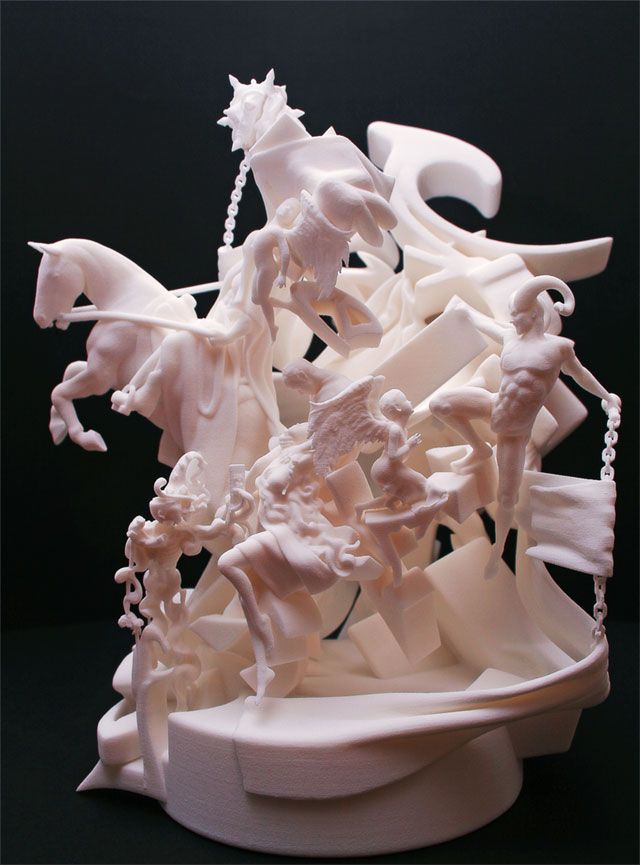 ...Based on the original buggies.
...Based on the original buggies.
variation gripen beast 3D model
cgtrader
can be carved variation gripen beast
What kind of beast is a food 3D printer?
3D printing technology is really impressive. The amazing food 3D printers, which seemed impossible yesterday, have become a reality today, and it is quite possible that they will turn out to be something quite ordinary in the near future.
The operation of a 3D food printer is very similar to that of a conventional inkjet printer. Only instead of cartridges with liquid dyes, the food printer uses cartridges with food ingredients. There are many recipes stored in the printer's memory. To print a dish, you must select one of the recipes and press the button. After that, the printer, in accordance with the algorithm embedded in it, will begin to lay out the ingredients in layers on the work surface or on a plate. The product thus obtained is cooled or baked.
The product thus obtained is cooled or baked.
MIT scientists have developed the Digital Chocolatier, a 3D printer that prints treats from chocolate, fruits and nuts. The printer consists of a carousel with ingredients, a temperature-controlled mold and a user interface.
Digital Chocolatier 3D Printer
As the ingredients are fed into the heat-controlled mold, it cools quickly, fixing the shape of the chocolate and preventing it from spreading over the surface. All recipes can be stored in the 3D printer's memory and used again and again if necessary.
Another 3D printer developed by the Massachusetts Institute of Technology is called the Virtuoso Mixer.
Virtuoso Mixer 3D Food Printer
This 3D printer is also carousel mounted. In the upper tier of the Virtuoso Mixer, we see 8 cartridges with scales and temperature sensors to control the amount and properties of the food that is stored in them.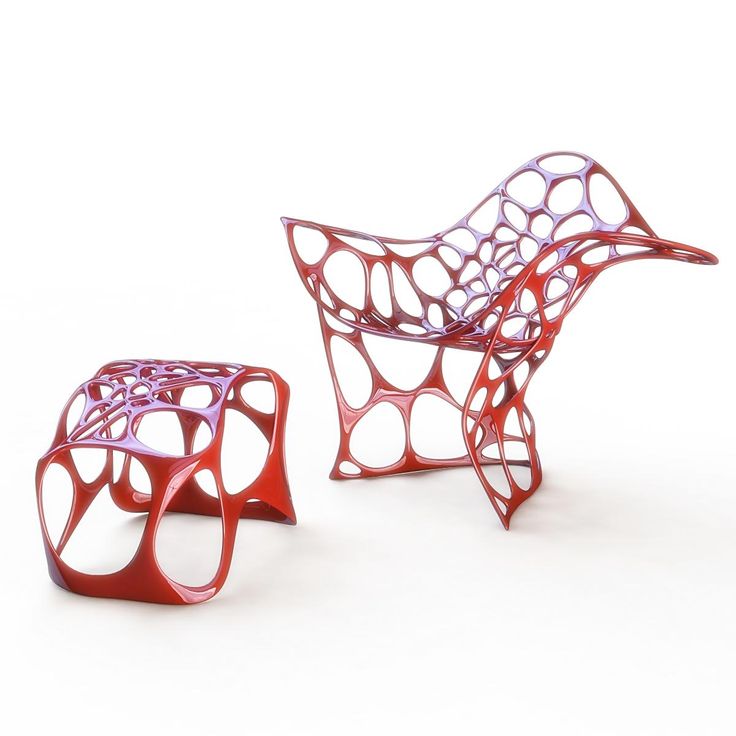 Such cartridges are refilled with ready-made food components. In the middle tier there are 8 cartridges with built-in miniature crushers and mixers for mixing ingredients. Finally, the last, lower tier functions as an extrusion tray on which food is prepared and stored. This tier is equipped with powerful thermoelectric heating and cooling devices, as well as an insulating glass lid for quick baking of ready mixes.
Such cartridges are refilled with ready-made food components. In the middle tier there are 8 cartridges with built-in miniature crushers and mixers for mixing ingredients. Finally, the last, lower tier functions as an extrusion tray on which food is prepared and stored. This tier is equipped with powerful thermoelectric heating and cooling devices, as well as an insulating glass lid for quick baking of ready mixes.
How to make a Chocolate Hazelnut Dessert with Virtuoso Mixer 3D Printer
The Virtuoso Mixer interface is designed to allow users to quickly and easily experiment with different combinations of ingredients. The final recipe can eventually be saved for later use.
Various desserts that can be made with the Virtuoso Mixer
The same MIT laboratory created a prototype food 3D printer for printing multi-component dishes. The installation was named Cornucopia, which translates into Russian as "Cornucopia". The role of cartridges here is performed by tubes with food components, which should be stored in the refrigerator.
The role of cartridges here is performed by tubes with food components, which should be stored in the refrigerator.
Digital Fabricator 3D Food Printer
According to the cooking recipe, nutrients are squeezed into the extruder head of the food printer. The mixer, combined with an extruder, forms the mixtures of proteins, fats, carbohydrates and flavors specified in the recipe. From the resulting mass, the finished dish is printed layer by layer with an accuracy of 0.5 millimeters. The printhead of the printer has two additional tubes designed to heat and cool the product using a laser.
Digital Fabricator 3D Food Printer
As conceived by the developers, the Digital Fabricator 3D food printer allows you to control the taste, aroma and nutritional value of future dishes to the smallest detail. An interesting feature of a 3D printer is the ability to receive orders over the Internet.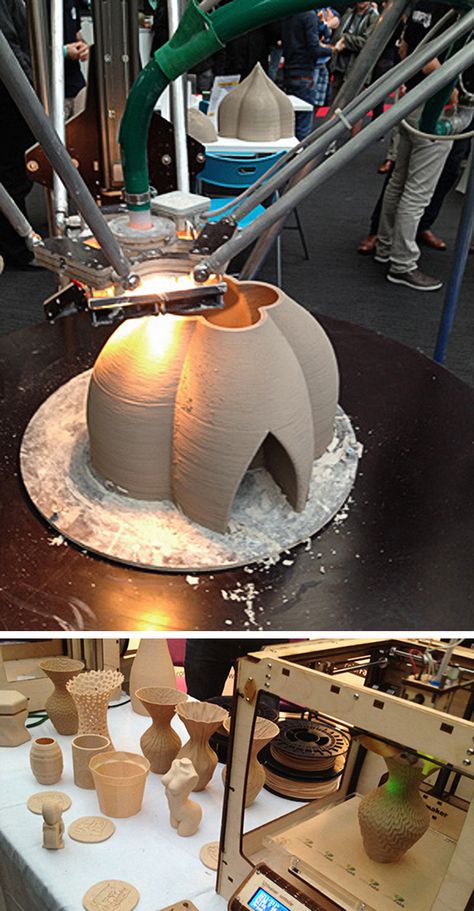 Just imagine: it is enough for you to choose the desired dish from your workplace, and when you return home, the ordered crispy chicken cutlets, fragrant donuts and airy strawberry soufflé will already be ready.
Just imagine: it is enough for you to choose the desired dish from your workplace, and when you return home, the ordered crispy chicken cutlets, fragrant donuts and airy strawberry soufflé will already be ready.
Digital Fabricator 3D Print Head
Food 3D printer cartridges are filled with a wide variety of food components that can be ordered based on your own preferences. If there is not enough content in the cartridges to print the ordered dish, then the printer offers the user another recipe with similar ingredients.
Not far behind the scientists of the Massachusetts Institute of Technology and Philips researchers, who invented a model of a 3D food printer capable of printing dishes with molecular accuracy.
Philips 3D Food Printer Prototype
Philips 3D Food Printer Prototype
This model is especially appealing to parents who need to feed their baby healthy but unattractive food. Using the printer, you can print carrot spaghetti, potato candy, Brussels sprout ice cream, broccoli foam.
Using the printer, you can print carrot spaghetti, potato candy, Brussels sprout ice cream, broccoli foam.
Philips 9 food 3D printed dish0016
dish printed by the PHILIPS
PHILIPS PHILIPS
PHILIPS 3D printer. When designing their device, the laboratory specialists collaborated with experts from the French Culinary Institute. The 3D food printer developed by the laboratory specialists was named Cornell. Using a printing device, you can print a dish of any conceivable and unthinkable design with any ingredients, taste and nutritional value. The Cornell printer is designed for restaurant chefs and homemakers who can now print exciting new dishes with healthy ingredients. Unlike 3D printers, which have remained a concept, Cornell is a device that is almost ready to use.
Cornell
3D food printer The developers suggest using everything that can be squeezed out through a cooking syringe as food colors: soft cheese, melted chocolate, shortbread dough, ice cream, etc. Food coloring can also be made from solid foods that are crushed and mixed with water, milk, or other edible liquids.
Food coloring can also be made from solid foods that are crushed and mixed with water, milk, or other edible liquids.
The Cornell Food Printer is capable of creating highly intricate edible designs. Laboratory workers tried to combine cornmeal with water and print a "curly" cake. This flatbread, with its light-weight flower-shaped structure, proved to be even easier to fry than the traditional Indian flatbread.
3D Printed Curly Flatbread
3D food printers open up a whole new horizon of possibilities for cooking unusual dishes. How do you like a spaceship printed with green peas or carrots?
A spaceship printed from carrots
It is likely that in some 5-10 years in every house next to a microwave oven and an electric kettle there will be a wonderful modern 3D printer that will print any food that only its owner can imagine.
10 amazing things created with 3D printing
3D printing technology is improving every day.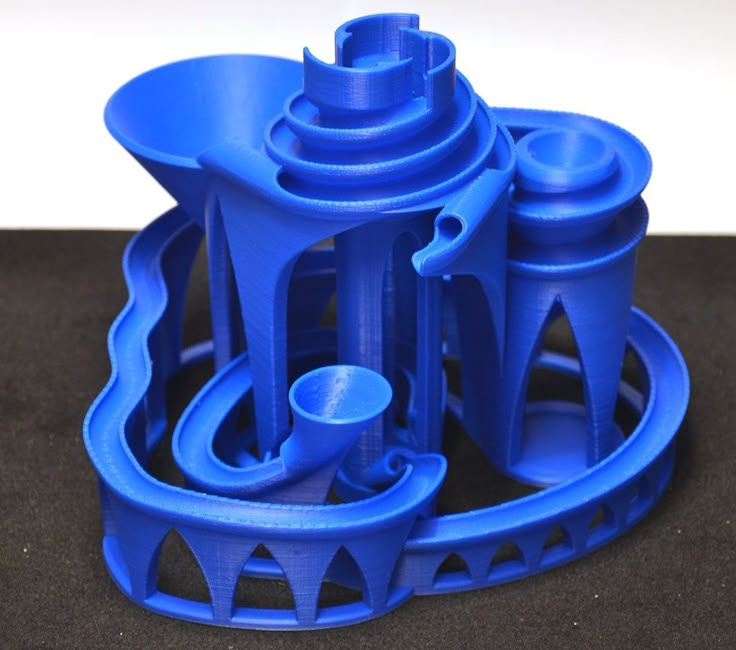 There is no doubt that in the future, 3D printers will be considered as important an invention of mankind as, for example, the creation of the Internet. Researchers, investors and even scientists from NASA see the huge potential of these devices and are eager to find practical applications for them. Below, we'll highlight some of the amazing things that have already been 3D printed.
There is no doubt that in the future, 3D printers will be considered as important an invention of mankind as, for example, the creation of the Internet. Researchers, investors and even scientists from NASA see the huge potential of these devices and are eager to find practical applications for them. Below, we'll highlight some of the amazing things that have already been 3D printed.
Content
- 10. Food products
- 9. Medical implants
- 8. Racing car
- 7. Exoskeleton
- 6. Personalist heroes “Star Wars” 4
- 3. Batteries and generators
- 2. Automatons
- 1. 3D printers
10. Food products
Even food can be printed on 3D printers! 3D Systems has been able to achieve incredible success in terms of printing various food products. The Chefjet is capable of printing chocolates and candies in dozens of flavors. It works on the same principle as other 3D printers, layering on top of each other the building blocks of confectionery until they are ready.
You might think that printing products has no practical use. However, it is not. Representatives of 3D Systems claim that they can create complex structures, including moving parts. Their printer will be in demand in restaurants, as it will allow to print any desserts requested by customers. Thus, the need to purchase and store products until they are used will disappear.
NASA is also conducting research into printing food for astronauts on board spacecraft. The fact is that products delivered to orbit take up a lot of space and have a limited shelf life. Food cartridges of 3D printers are smaller and can perform their functions for up to 30 years. In the future, food printing technology will solve the problem of providing food for people who go on long-term interstellar travel.
9. Medical Implants
3D Printed Artificial Jaw 3D printing has also benefited global medicine. So, in 2012, an 83-year-old patient was implanted with a new titanium jaw. The machine printed it by fusing layers of titanium powder under the influence of lasers. The operation was successful, and the doctors began to vied with each other to praise the benefits of printed implants. There were no complications during the procedure, the next day the patient ate and talked on her own.
The machine printed it by fusing layers of titanium powder under the influence of lasers. The operation was successful, and the doctors began to vied with each other to praise the benefits of printed implants. There were no complications during the procedure, the next day the patient ate and talked on her own.
Other artificial body parts have also been 3D printed. Scientists at Princeton University have created a functioning human ear with integrated electronics. Previously, it seemed that the fusion of mechanical parts with body tissues is something from the category of fantasy. But modern technology has helped bring this idea to life. And scientists have the opportunity to create and implant patients with devices that theoretically exceed the characteristics of real parts of the human body. Agree, this is another step towards the creation of cyborgs.
This is interesting: Doctors have no doubt that in the near future, printers will even be able to print internal organs for patients, eliminating the need to look for a suitable donor.

8. Racing car
A 3D printed car that can accelerate to 100 km/h and weighs only 220 kg- printer spare parts. The car accelerates to 100 kilometers per hour, while its net weight reaches only 220 kilograms. True, the assembly of such cars today is much more expensive than the industrial production of their counterparts. But scientists expect that in the coming years, the cost will decrease, because consumables used for 3D printing will become cheaper.
Experimental car made of durable plastic and carbon fiber. The 3D printer allowed students to create complex parts in one go, rather than assembling them from dozens of small parts. An additional advantage of this approach is that the replacement of worn parts in the future will be carried out many times faster than now.
7. Exoskeleton
3D Printed Exoskeleton for Emma The Alfred Dupont Children's Hospital has developed a functional exoskeleton to help disabled children with musculoskeletal disorders. It supports babies and allows them to move freely.
It supports babies and allows them to move freely.
One day, two-year-old Emma was unable to use the exoskeleton because it was too heavy for her. After that, a team of scientists developed a lighter analogue and printed it using a 3D printer.
The exoskeleton provided Emma with the support she needed to move without pain and use her limbs effectively. I am also glad that this device was created to order in the hospital. This means that its design can be modified as the patient grows.
The benefits of 3D printing for medical purposes don't end with the creation of exoskeletons. Scientists from the University of Victoria are developing special casts for broken limbs that are very light and strong. Created using 3 D-printing technology, plasters reliably protect bones from any external influences while they heal after fractures.
6. Personalized Star Wars Characters
Star Wars Action Figures In 2012, Walt Disney Pictures acquired the rights to the Star Wars franchise. A few months later, fans of the exciting epic got the opportunity to purchase personalized figures of their favorite characters. Disneyland visitors can now become Imperial Stormtroopers, Jedi Knights, and more.
A few months later, fans of the exciting epic got the opportunity to purchase personalized figures of their favorite characters. Disneyland visitors can now become Imperial Stormtroopers, Jedi Knights, and more.
The client's face is scanned from different angles using a special machine. After that, it is printed in 3D on the chosen 7-inch model. The cost of the service is $100.
3D scanning technology has been used in video games for over 3 years. Thanks to her, players get the opportunity to "impose" their face on the in-game character. Other companies make money by creating specific personalized superheroes for each client. To work, they need only 5 photographs of a person's face, taken from different angles.
5. Nylon Bicycle
3D Printed Nylon Bicycle Outperforms Conventional Bicycle Developers from the European Aerospace and Defense Concern have developed a unique aerobicycle, demonstrating their achievements in 3D printing. Powerful lasers are used to create the layers of the structure.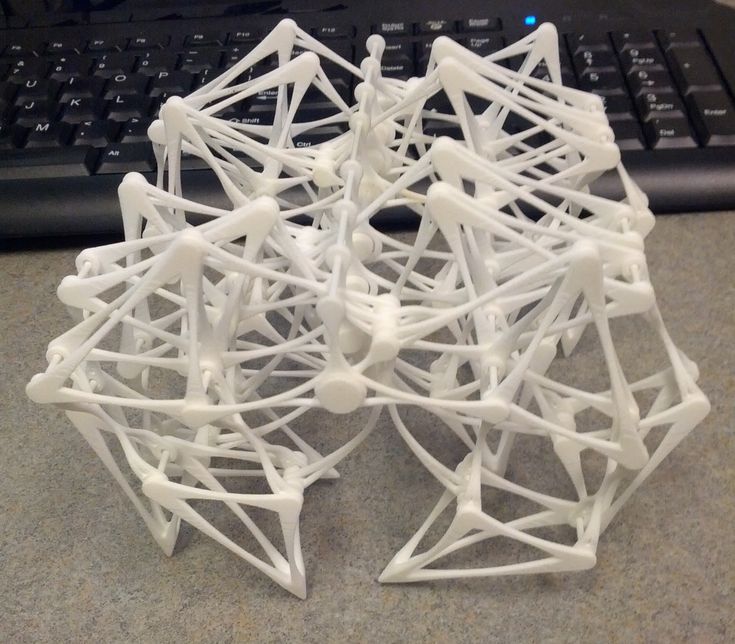 They heat the nylon and give it the desired shape. Gradually, the layers overlap each other. The bike presented by scientists is fully functional, despite the fact that even the pedals and chains in it were printed on a 3D printer.
They heat the nylon and give it the desired shape. Gradually, the layers overlap each other. The bike presented by scientists is fully functional, despite the fact that even the pedals and chains in it were printed on a 3D printer.
Representatives of the concern say that their nylon bike has a number of advantages over traditional models. It weighs 2 times less, not inferior in strength to steel. It also plays a big role in the fact that the process of 3D-printing a bicycle is more “cleaner” in environmental terms than standard production. Any spare mechanism for this type of transport in the future will be able to be printed on the spot. That is, users do not have to overpay for shipping and waste time waiting for the right part.
4. Tools
3D Printed Wrench 3D printing technology is already being used by leading manufacturers to produce highly specialized tools. Among them are both ordinary wrenches, screwdrivers and hammers, as well as surgical scalpels . Experts assure that in 5-10 years, customers will be able to print self-designed tools at home or order them from manufacturers.
Experts assure that in 5-10 years, customers will be able to print self-designed tools at home or order them from manufacturers.
Interesting: Stratasys announced a year ago that it had successfully built a cordless drill using a 3D printer. It is made up of dozens of different polymers. The handle of the drill for the convenience of users is made soft, the body is made of impact-resistant plastic. Drills are not inferior in strength to industrial counterparts.
3. Batteries and Generators
3D Printed Generator Helps You Charge Your Phone Anywhere Everyone knows the situation when your phone's battery runs out at the most inopportune moment - for example, when you go on a date or take a bus to a neighboring city. Unfortunately, there is no possibility to charge the device on the spot. But Erichsen representatives believe that they have found a solution to this problem. They designed a range of hand-operated power generators and 3D printed them. The rotor of these devices rotates at a frequency of 70 revolutions per second. This allows you to generate enough electricity to charge a small device - a smartphone, an e-reader, etc.
The rotor of these devices rotates at a frequency of 70 revolutions per second. This allows you to generate enough electricity to charge a small device - a smartphone, an e-reader, etc.
Interesting: At the same time, other firms are exploring the possibility of 3D printing lithium-ion batteries for gadgets. Note that the created prototypes are superior in performance to standard batteries. They weigh 2-3 times less and have smaller dimensions, which allows developers to significantly increase the usable capacity.
2. Automatons
Automaton Basically, scientists are exploring the possibilities of printing various useful things on 3D printers - tools, prostheses, food, etc. But you must admit: solving actual problems is good, but sometimes you want to get distracted and create some kind of fun little thing for the soul. As 3D printing technology is already well adapted to everyday use, some people have begun to design automatons - in other words, winding mechanisms that perform simple actions.
Lets Make Robots user Cevinius has created a walking automaton powered by gravity. A slight push will allow the mechanism to smoothly descend from a gentle slope. The cost of such an automaton is only 6 dollars. On the Internet, you can also order more complex mechanisms created using 3D printers. For example, a dragon flapping its wings and moving across the surface when a lever is turned.
And viewers of the British television project QI recently saw the so-called Sand Beast. It is a 3D printed mechanism powered by the wind. It consists of over 70 moving parts. The Sand Beast begins to crawl along the surface when its turbine is started by the air currents.
1. 3D printers
Rep-Rap is building a 3D printer that can print copies of itselfRepRap is working on a 3D printer that can print... itself! This project is open, that is, anyone can contribute by contributing to the achievement of the goals set by the researchers.
This is interesting: At the moment, 4 different versions of the printing device “cloning” itself have already been released.
A 3D printer easily prints almost all the parts used to create a copy of it.
If the goal of the researchers is achieved, users from all over the world will be able to access a machine capable of printing a wide range of useful items much sooner. Such devices will become especially important in poor countries, whose inhabitants will be able to create the vital things that they currently lack.
It is likely that very soon 3D printing technology will be significantly improved and will become available to anyone. Just imagine: you do not have to go to the grocery store and cook breakfast, because it can be simply printed. And the closet shelves will be bursting with outfits that you designed and created yourself, without touching the sewing machine. Now this seems like a fantasy, but do not forget that at the end of the 19th century, the director of the US National Patent Office proposed to American President William McKinley that this organization be closed down.











